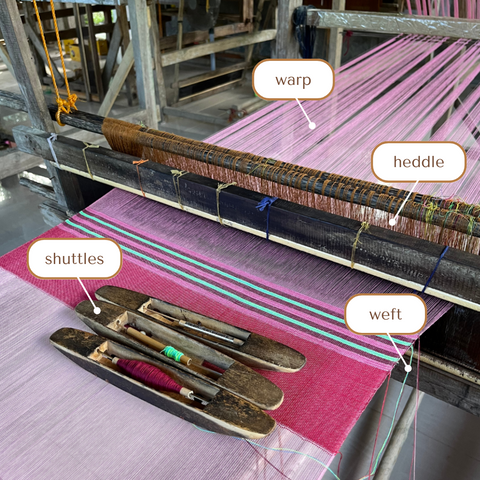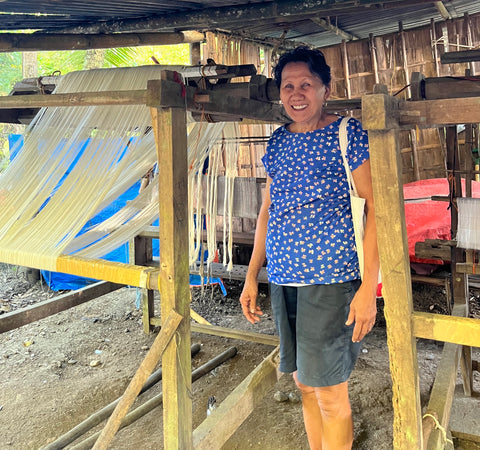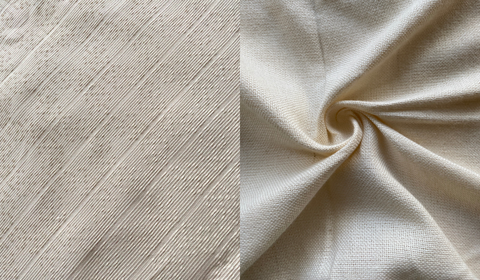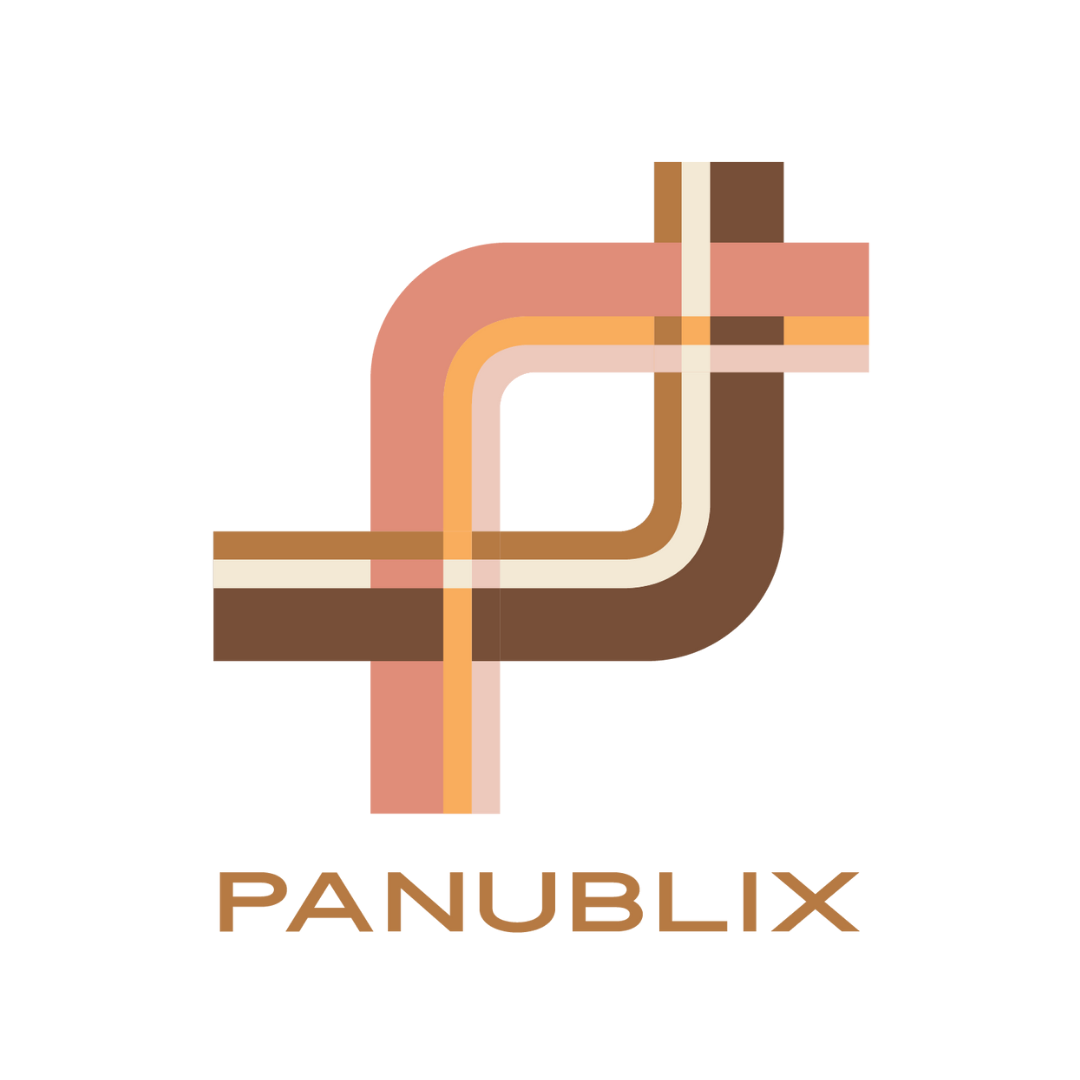Table of Contents |
What is handloom weaving?
Handloom weaving is the art of creating textiles using a loom operated by hand instead of by machine. It is a time-honored tradition that can be traced back to ancient times and remains an integral part of many cultures around the world, each with its own unique form of handloom weaving.
In the Philippines, handloom weaving is practiced in various regions across the country, each with its own distinct styles and techniques. Fabric designs range from simple stripes to intricate patterns and are made using different types of looms.
In this article, we will explore handloom weaving through the hablon weaving tradition of Iloilo and take you through a step-by-step process of creating fabric with a handloom.
Handloom weaving terms
-
Handloom is a machine operated manually by skilled weavers to produce fabrics. Unlike power looms, handlooms do not require electricity to run. Handlooms are classified into different types, among them are:
-
Backstrap looms rely on body tension with one end attached to a stationary object and the other held taut by the weaver’s back. This type of loom is commonly found in the mountainous regions of Luzon and in Mindanao.

-
Floor looms are large looms with foot pedals. These larger looms allow for wider fabrics to be woven. This is the most common loom type used in making hablon and some of these machines are installed in weavers’ homes.

-
Yarn is often used interchangeably with “thread”, but there is a distinct difference between them. They are both long strands of fibers but yarn is used for weaving while threads are used for sewing.
Traditionally, weaving yarn is made of natural materials like cotton and abaca but in the present, polyester yarns are commonly used due to their wide availability and cheaper price.
-
Warp refers to the set of lengthwise yarns that are held stationary in tension on a loom. These yarns are attached to the loom before weaving begins.
-
Weft is the horizontal yarn that is drawn through and inserted over and under the warp yarns. By carefully manipulating the interlacing of the warp and the weft yarns, handloom weavers can create a wide variety of designs.
-
A heddle holds and controls the warp threads during weaving.
-
The shuttle is a device that the weaver passes back and forth between the warp threads, in order to weave in the weft.
Parts of the handloom

Parts of the handloom (floor loom) used in weaving hablon.
A closer look at the handloom weaving process
While it may seem simple at first glance, handloom weaving is a complex art form that requires skill, patience, and dedication. In fact, it involves a lot of preparation before the actual weaving takes place.
Below is a step-by-step guide shared by the Indag-an Primary Multipurpose Cooperative (IPMPC) in Miagao, Iloilo alongside photos and videos taken by the Panublix team at Cabayogan Loom Weavers Association in Badiangan, Iloilo.
(Note: Words in parentheses are in the Hiligaynon language. “Yarn” and “threads” in the original guide are used interchangeably. )
The process of making “hablon” using a handloom
-
Planning - Thread cones in selected colors will be arranged according to the desired pattern before warping.
-
Warping (Sab-ong) - Threads will be set on a warping tool - then these threads will be grouped and rolled along the bamboo pegs of the warping frame. Threads are counted by hand based on the desired length, width and design.
 Responsibilities are shared among members of the community. For example, warping is a physically demanding task and is often undertaken by the younger members due to its strenuous nature. This collaborative approach strengthens the communal bonds that are central to this craft.
Responsibilities are shared among members of the community. For example, warping is a physically demanding task and is often undertaken by the younger members due to its strenuous nature. This collaborative approach strengthens the communal bonds that are central to this craft.
-
Beaming (Likis) - Threads from the warp will be rolled along the weaver's beam, a bamboo cylinder at the upper back of the loom.

-
Hedding (Sulod sa Binting) - Each thread of the warp passes through the openings of the heddle.

-
Reeding (Sulod sa Salod) - After hedding, each thread will be inserted on each opening of the metal reed using a bamboo hook.
-
Tie-in (Higot sa Baston) - The end of the threads will be tied into the cloth roll, a wooden cane at the base of the loom.
-
Spooling (Pangalingas) - Weft thread needed for the shuttle will be spooled using a traditional spooling wheel.
-
Weaving (Habol) - The weaver steps on the bamboo pedal to raise or lower the heddle then the weft will be propelled across the loom by a shuttle and then the weft will be pushed against the fell of the cloth by the reed.
The people behind the looms
Hablon weavers, predominantly women, form the backbone of the handloom tradition in Iloilo. The skill gets passed down through generations and is often a family endeavor with multiple members involved in the trade.

Elda Baldon, a master weaver and President of Cabayogan Women Loom Weavers Association, recalls watching her mother weave for hours on end. This inspired her to learn the craft and today it is she who passes on the tradition to her grandchildren who embrace it fully.
Likewise, Elsie Balidiong, Manager of Salngan Livelihood Multi-Purpose Cooperative, was fascinated by the handloom as a young girl. She eventually followed the footsteps of her mother and grandmother to become a weaver herself. Choosing to weave in the comfort of her home allowed her to spend more time with family while earning income.
For both Elda and Elsie, handloom weaving is not just a source of livelihood for their families but also an important legacy to be preserved for future generations.(More stories: Weaver of the Month features the personal journeys of the dedicated artisans behind the handlooms.)
Handloom weaving in modern times: Challenges and solutions
In the present, handloom weavers face challenges such as lack of infrastructure and equipment, limited access to natural fiber yarns, and the reality of younger weavers leaving the country for better opportunities overseas.
To address these gaps, there are programs by the Department of Science and Technology (DOST), Philippine Textile Research Institute (PTRI), and Great Women that provide training and capacity-building for weavers to help revive the weaving industry in Iloilo.

About the photo: Panublix facilitated a 2-day training for the Baraclayan Weavers Association to help expand their product line with new designs taught by Ms. Anilene Tijing of Indag-an Primary Multipurpose Cooperative.The project was headed by Iloilo Science and Technology University (ISAT-U) as part of the DOST Community Empowerment Through Science and Technology (CEST) program.
Furthermore the establishment of the Regional Yarn Production and Innovation Center (RYPIC) in Miag-ao, Iloilo (and recently in Isabela in Northern Luzon) makes natural fiber yarns more accessible to weavers. These weaving yarns are made from locally-grown cotton, piña, and abaca, helping shift textile production away from fossil fuel-based materials like polyester.
Embracing handloom weaving and slow fashion
The value of artisan-made textiles can easily be overlooked in a world of mass production. Unlike the convenience of fast fashion, creating handwoven fabrics takes much more time, effort, and resources.

In recent years however, there has been a revival of interest in handloom textiles as consumers become more aware of the environmental and social impacts of fast fashion. The demand for handwoven textiles and slow fashion is increasing as eco-conscious consumers look for ethically-made products. This presents an opportunity for designers to infuse their creations with the authenticity and artistry of handwoven fabrics.
Panublix can connect you with weaving artisans who carry on the tradition of creating handloom fabrics. We are a sourcing platform that connects weavers, designers, and brands with eco-friendly fibers, yarns, and textiles so they can weave and design for a regenerative future.
Recognizing the invaluable role that handloom weaving plays in heritage preservation and economic empowerment, we work closely with weavers to provide enterprise support and help integrate them into the digital economy. (Read more about our initiatives here.)
You can shop our selection of handloom fabrics here or message us at hello[@]panublix.com for inquiries.
Iloilo Pixel Leaf Weave Cotton Hablon and Iloilo Cotton Hablon Plain
Read the stories of our partner artisans in our special series, Weaver of the Month. Follow us on social media (Facebook, Instagram, Linkedin) or subscribe to our newsletter to read more stories from our weavers.
Sources and further reading“Crafting Futures: Sustaining Handloom Weaving in the Philippines.” British Council in the Philippines, 2020, www.britishcouncil.ph/sites/default/files/british_council_-_crafting_futures_-_executive_summary_0.pdf.
“Difference Between Yarn and Thread.” Textile Industry, www.textileindustry.net/difference-between-yarn-and-thread. Accessed 15 Sept. 2023.
Emmert, Amy. “The Rise of the Eco-friendly Consumer.” Strategy+Business, 8 July 2021, www.strategy-business.com/article/The-rise-of-the-eco-friendly-consumer.“Hibla Ng Lahing Filipino (the Artistry of Philippine Textiles).” National Museum of the Philippines, www.nationalmuseum.gov.ph/ethnology-hibla. Accessed 15 Sept. 2023.

